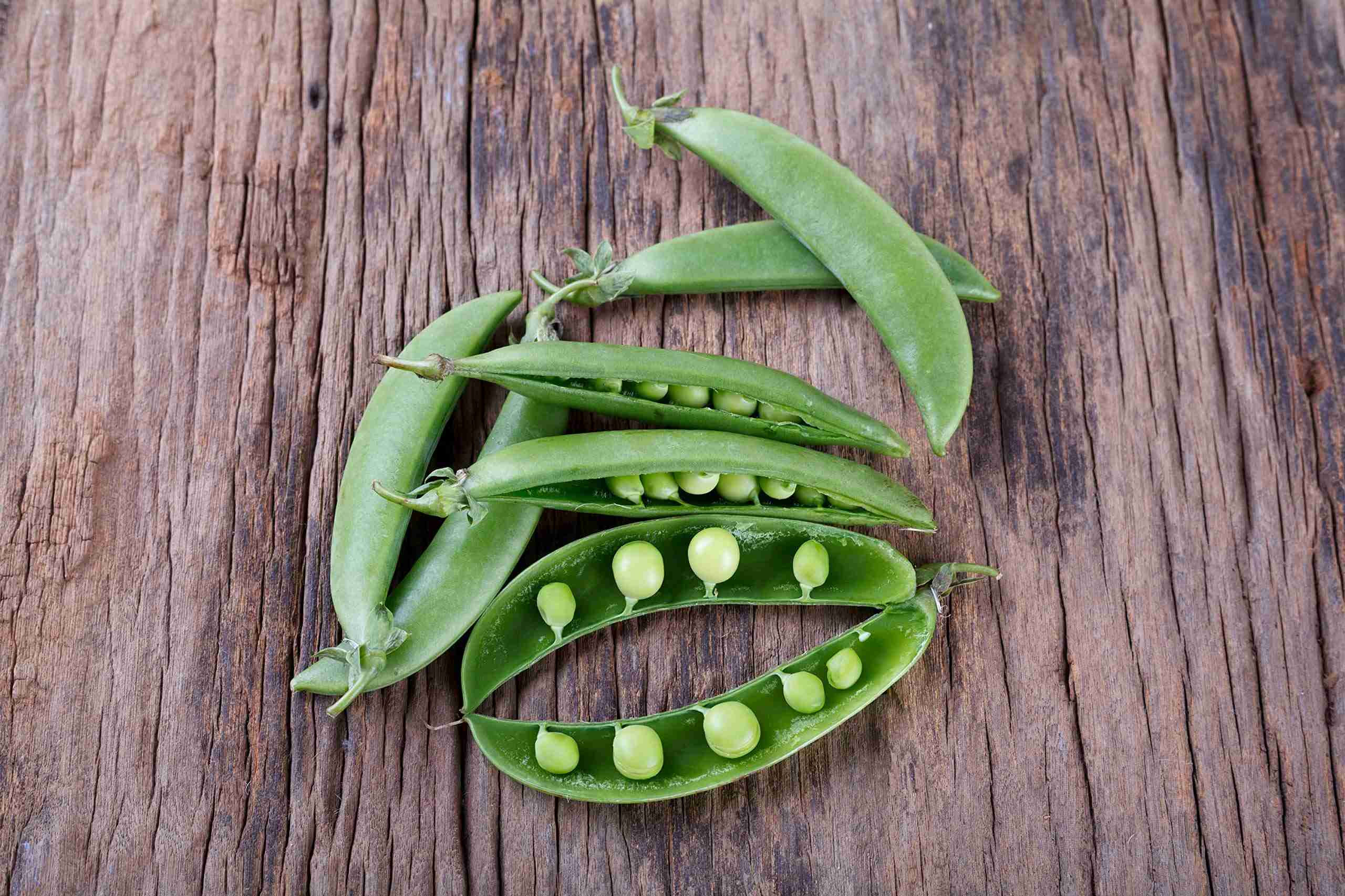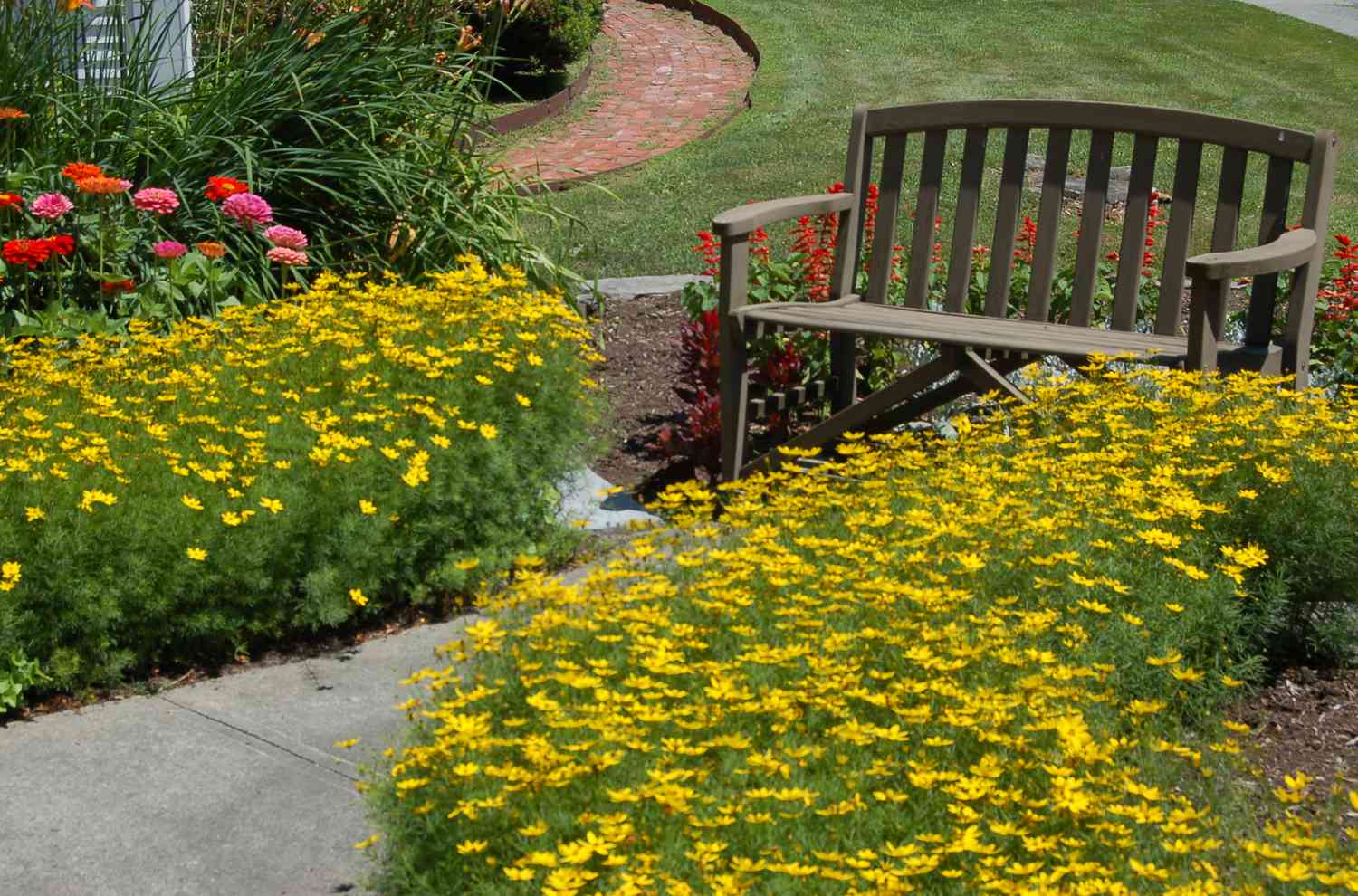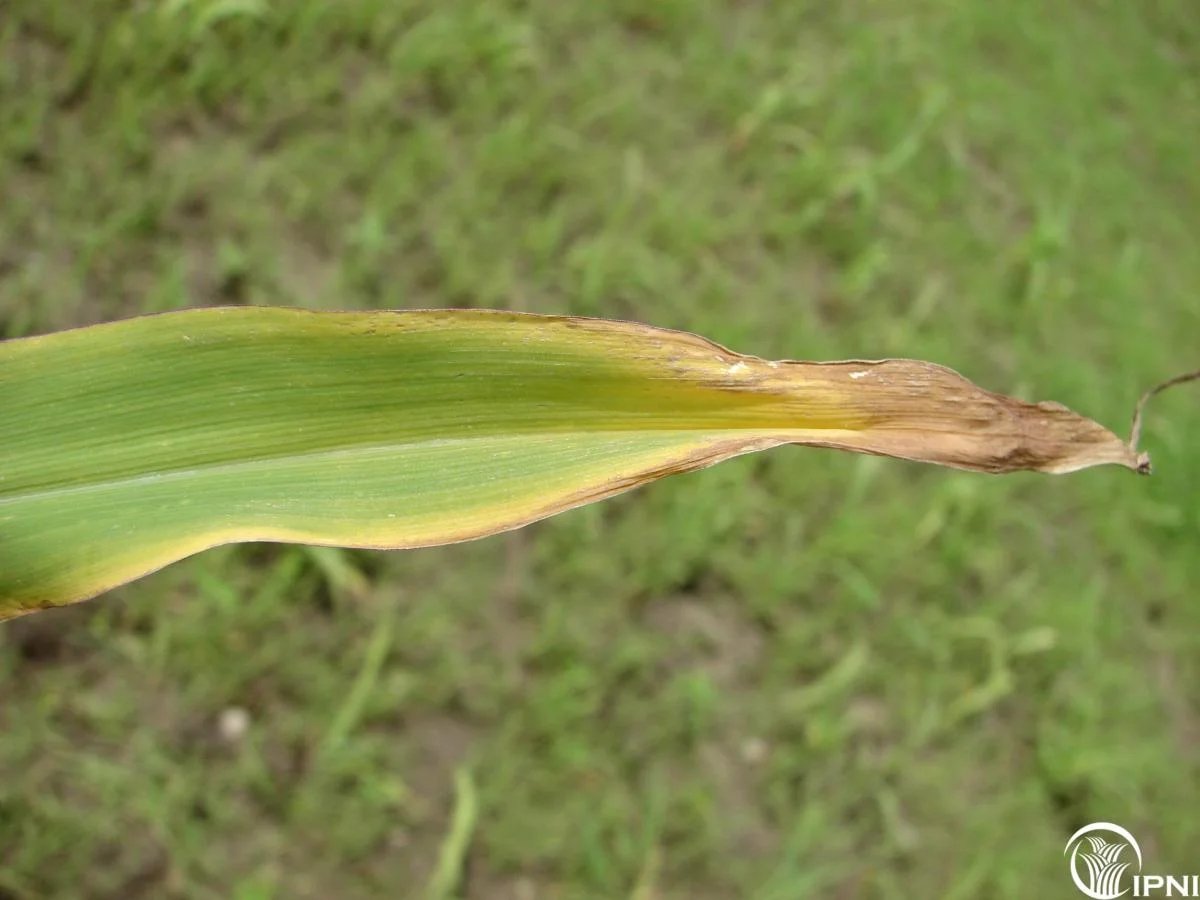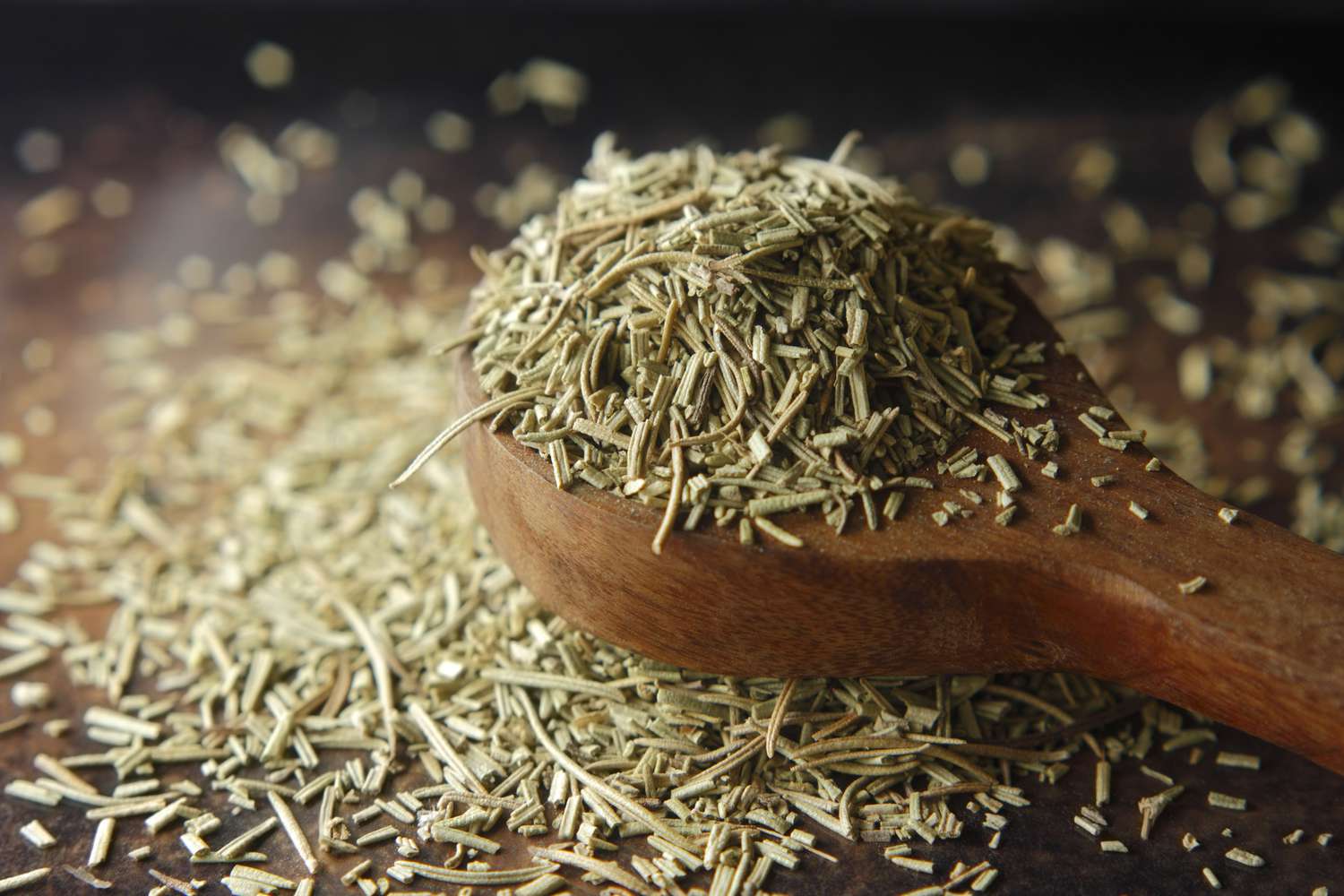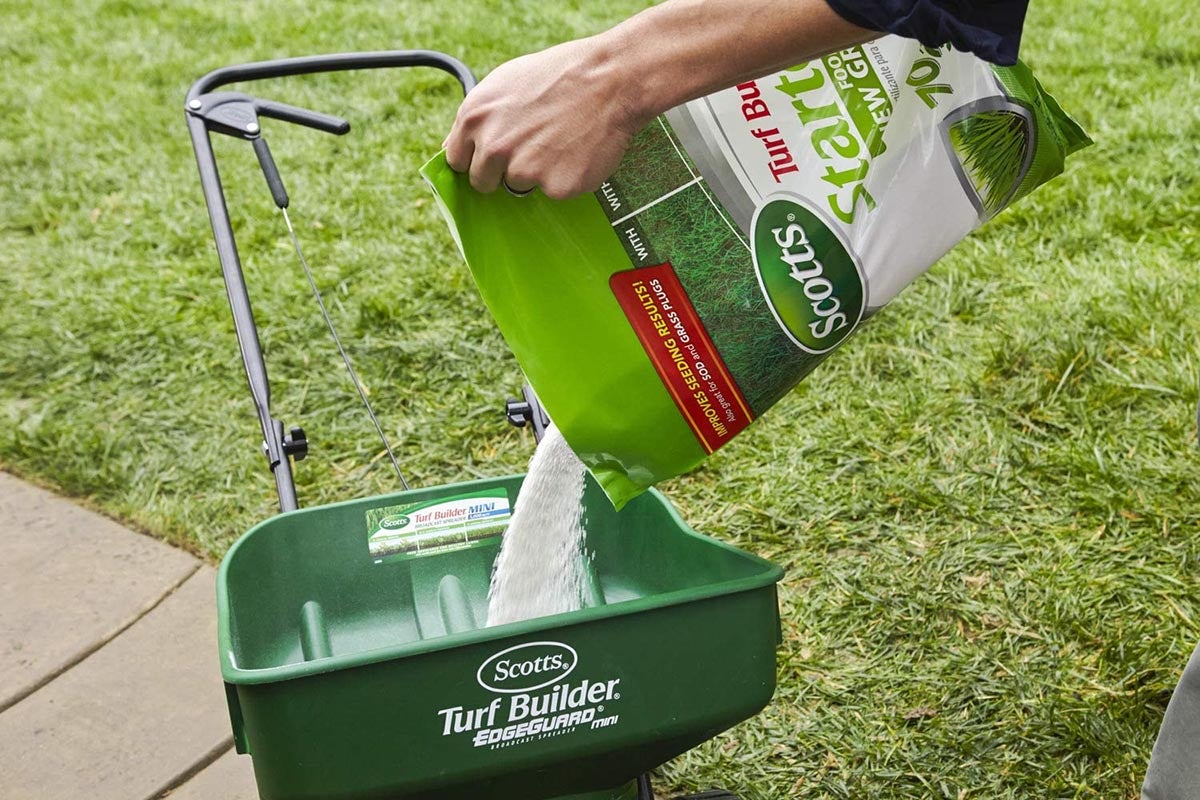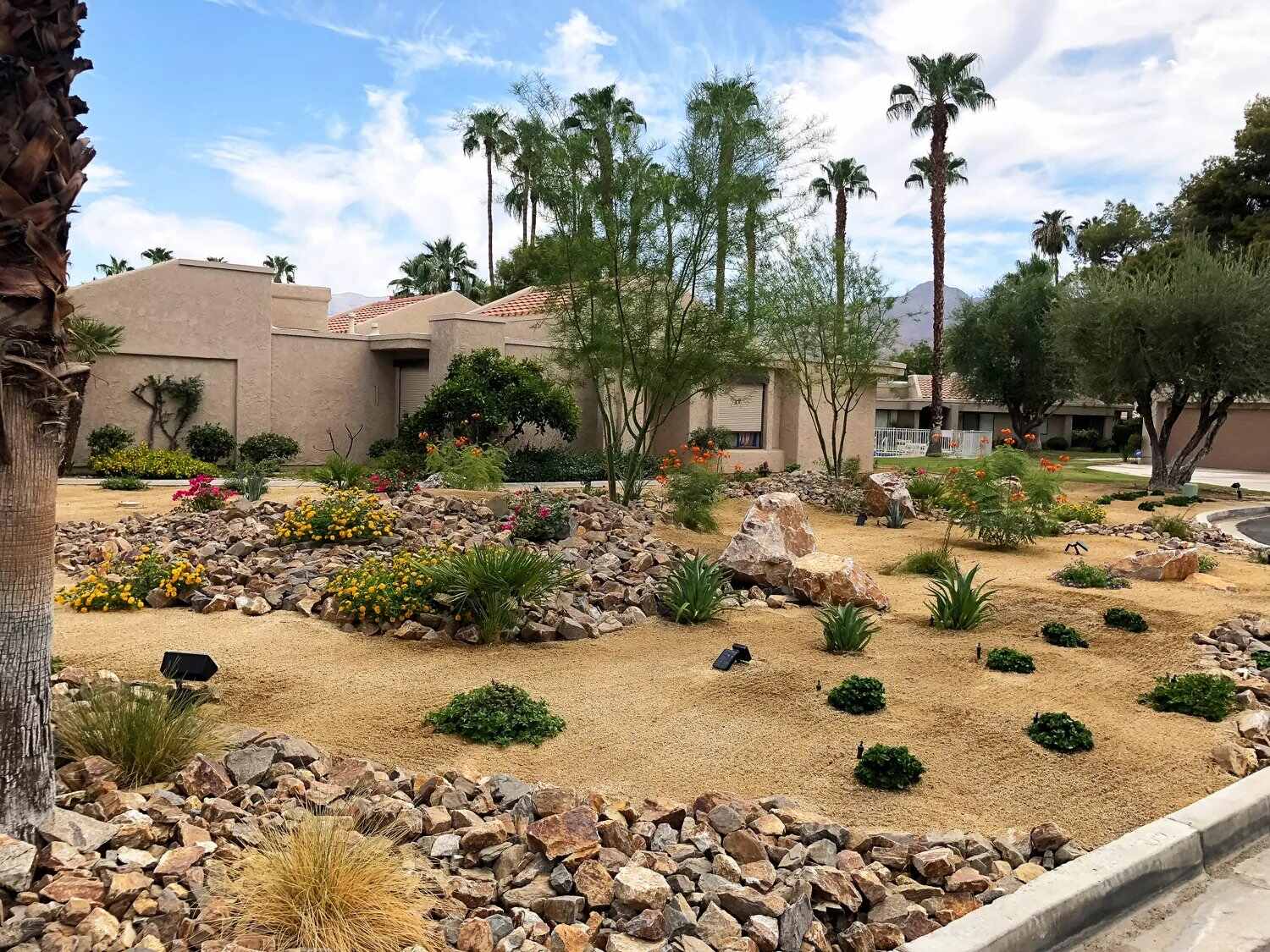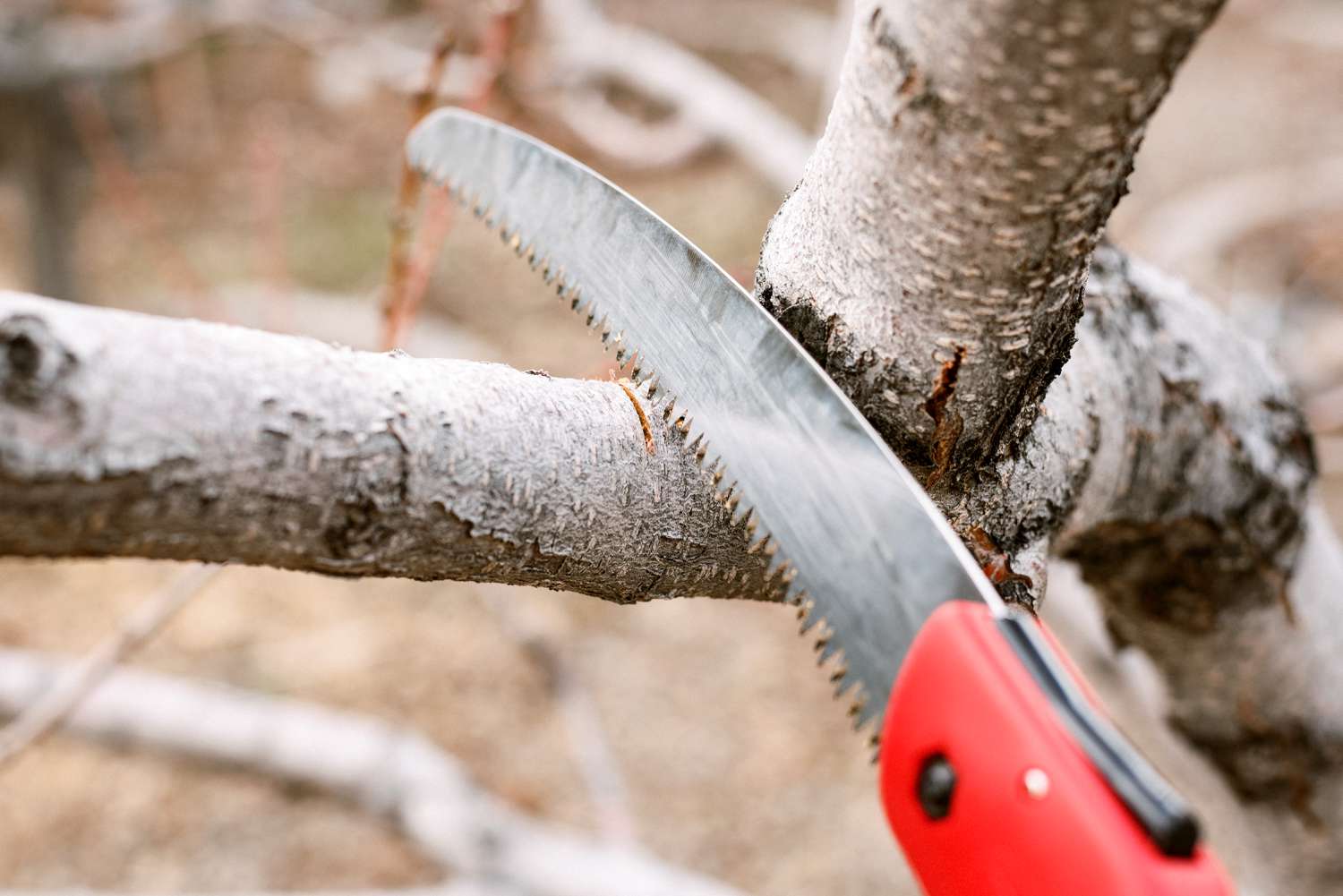Home>Garden Design>Landscape Design>What Is Pea Gravel Used For In Landscaping
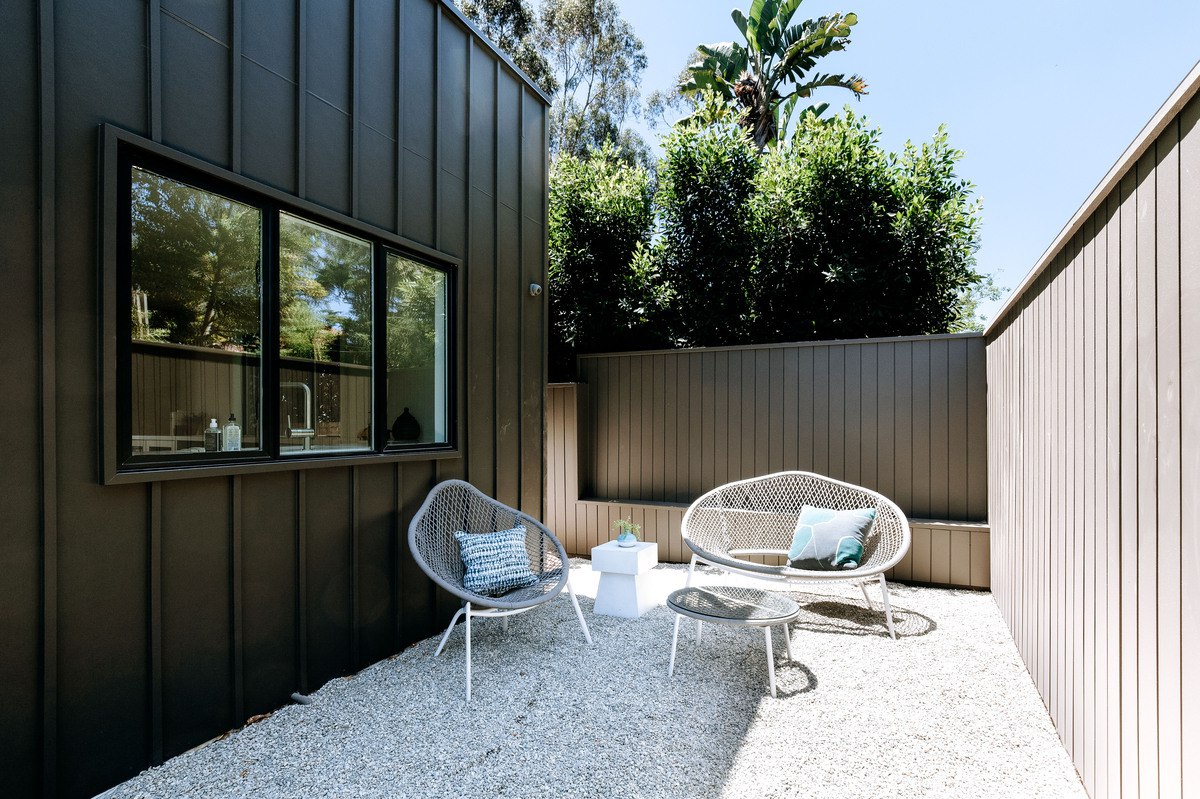

Landscape Design
What Is Pea Gravel Used For In Landscaping
Modified: January 22, 2024
Discover the versatility of pea gravel in landscape design. Explore its uses and benefits in creating beautiful and functional outdoor spaces.
(Many of the links in this article redirect to a specific reviewed product. Your purchase of these products through affiliate links helps to generate commission for Chicagolandgardening.com, at no extra cost. Learn more)
Table of Contents
Introduction
Welcome to the world of landscape design, where every element plays a crucial role in creating an aesthetically pleasing and functional outdoor space. One such element that has gained immense popularity in recent years is pea gravel. Pea gravel is a versatile landscaping material that can be used for a wide range of purposes, from creating pathways and walkways to adding a decorative touch to your garden.
So, what exactly is pea gravel? It is a type of small, rounded stone that is often characterized by its smooth texture and vibrant colors. The size of the stones typically ranges from 1/8 inch to 3/8 inch, making it ideal for various landscaping applications.
Now you may be wondering why pea gravel has become such a popular choice among landscapers and homeowners alike. Well, there are several reasons for its rise in popularity. First and foremost, pea gravel is incredibly durable and long-lasting, making it a cost-effective option for outdoor projects. It can withstand heavy foot traffic and is resistant to erosion, ensuring that your landscape remains intact for years to come.
In addition to its durability, pea gravel offers a plethora of benefits when it comes to landscaping. It is a natural material that can enhance the overall aesthetic appeal of your outdoor space. With its smooth, rounded stones, pea gravel creates a soft and inviting atmosphere, adding a touch of elegance to any landscape design.
Another significant advantage of pea gravel is its excellent drainage properties. The porous nature of the stones allows water to easily penetrate the surface, reducing the risk of water pooling or flooding in your yard. This makes it an ideal choice for areas prone to heavy rainfall, as it helps prevent water damage and the growth of mold or mildew.
Whether you are looking to create a functional pathway, add a decorative ground cover, or define garden bed borders, pea gravel can be your go-to option. Its versatility allows you to unleash your creativity and design a landscape that suits your personal style and preferences.
In the following sections, we will explore the various uses of pea gravel in landscaping and delve into the specific benefits it brings to each application. So, let’s dive in and discover the countless possibilities that pea gravel has to offer in transforming your outdoor space.
Definition of Pea Gravel
Before we delve into the various uses and benefits of pea gravel in landscaping, it is essential to understand what exactly pea gravel is. Pea gravel is a type of small, rounded stone that is typically characterized by its smooth texture and colorful appearance. The name “pea gravel” stems from the fact that the stones are generally about the size of a pea, ranging from 1/8 inch to 3/8 inch in diameter.
Pea gravel is often made from various types of rock, such as granite, limestone, or basalt, which are naturally weathered and rounded by the elements over time. Its natural earth-tone colors, including shades of tan, brown, and gray, add a rustic yet elegant touch to any landscape design.
One of the distinguishing features of pea gravel is its smooth texture. Due to its natural erosion and weathering process, the stones are free from sharp edges and have a pleasingly smooth surface. This makes pea gravel not only visually appealing but also safe and comfortable to walk on barefoot.
The versatility of pea gravel lies in its ability to be used in a myriad of landscaping applications. Its small size makes it easy to spread and level, allowing for seamless integration into various design schemes. Whether you want to create a functional pathway, add a decorative ground cover, or define garden bed borders, pea gravel offers a unique blend of practicality and beauty.
It is worth noting that there may be slight variations in pea gravel depending on the region or supplier. Some pea gravels may have slightly different size ranges or colors. However, the key characteristics of smooth, rounded stones remain consistent across different variations.
Pea gravel can be found at local nurseries, home improvement stores, or landscaping suppliers. It is typically sold in bulk by weight or in bags, making it easily accessible for homeowners and professionals alike.
Now that we have a clear understanding of what pea gravel is and its basic characteristics, let’s explore the wide range of benefits it brings to landscaping projects.
Benefits of Pea Gravel in Landscaping
Pea gravel offers numerous benefits that make it a popular choice for landscaping projects. From its durability and versatility to its aesthetic appeal and low maintenance requirements, pea gravel is a fantastic addition to any outdoor space. Let’s explore some of the key benefits that pea gravel brings to landscaping:
Durability:
Pea gravel is highly durable and can withstand heavy foot traffic. Unlike mulch or wood chips, pea gravel does not break down or decompose over time, ensuring that your landscape remains intact for years to come. Its resistance to erosion makes it a suitable option for sloped areas or locations prone to soil displacement.
Excellent Drainage:
One of the standout benefits of pea gravel is its excellent drainage capabilities. The porous nature of the stones allows water to easily penetrate the surface, preventing water pooling, erosion, and the formation of muddy areas. This makes pea gravel a practical choice for areas with poor drainage or heavy rainfall, as it helps mitigate water-related issues.
Low Maintenance:
Landscaping can be time-consuming and require regular maintenance, but pea gravel minimizes the need for ongoing upkeep. Unlike grass or plants, pea gravel does not need mowing, watering, or fertilizing. It also acts as a natural weed suppressant, reducing the need for herbicides and manual weed removal.
Aesthetic Appeal:
With its smooth, rounded stones and natural earth-tone colors, pea gravel adds a touch of beauty and sophistication to any outdoor space. It complements a wide range of architectural styles and landscape designs, creating a visually appealing and cohesive look. Whether you prefer a contemporary or traditional aesthetic, pea gravel can enhance the overall appeal of your landscape.
Versatility:
Pea gravel can be used in various landscaping applications, making it a versatile material. It is commonly used for creating pathways and walkways, providing a firm and stable surface for pedestrians. Pea gravel can also be used as a decorative ground cover around plants, trees, or outdoor living spaces. It can be paired with other landscaping elements, such as stepping stones or pavers, to create unique designs.
Environmentally Friendly:
Pea gravel is a natural material that is environmentally friendly. It is sourced from rock quarries and does not require extensive manufacturing processes. Additionally, its permeable surface allows rainwater to replenish the groundwater supply instead of contributing to stormwater runoff.
Overall, pea gravel offers a multitude of benefits that make it an excellent choice for landscaping projects. Its durability, drainage capabilities, low maintenance requirements, aesthetic appeal, versatility, and eco-friendliness are just some of the reasons why pea gravel has become a staple in landscape designs of all types.
Drainage Uses of Pea Gravel
One of the key advantages of pea gravel in landscaping is its excellent drainage properties. The porous nature of the stones allows for efficient water penetration, making it ideal for various drainage applications. Let’s explore some common uses of pea gravel for drainage purposes:
French Drains:
A French drain is a popular drainage system used to redirect excess water away from specific areas. It typically consists of a perforated pipe surrounded by gravel, such as pea gravel. The pea gravel acts as a filter, allowing water to flow freely into the perforated pipe while preventing soil or debris from clogging the drain. The stones also help distribute the water evenly along the length of the drain, preventing water from pooling or causing erosion.
Swales and Trenches:
In areas where water tends to collect or flow, such as along slopes or at the base of downspouts, swales or trenches can be created to redirect and manage the water flow. Pea gravel can be used as a lining material in these swales or trenches to promote efficient drainage. The porous nature of the stones allows water to percolate through the gravel, reducing the risk of erosion and water pooling.
Retaining Wall Drainage:
Retaining walls are commonly used in landscaping to hold back soil or create level terraces on slopes. To prevent water buildup behind the retaining wall, pea gravel can be used as a drainage layer. By placing a layer of gravel at the base of the wall, excess water can easily drain away, relieving hydrostatic pressure and preventing damage to the structure.
Planting Bed Drainage:
Proper drainage is essential for maintaining healthy plants, as excessive water can lead to root rot and other issues. Pea gravel can be incorporated into planting beds to improve the drainage capacity of the soil. By adding a layer of pea gravel to the bottom of the bed before filling it with soil, excess water can drain away, preventing waterlogged conditions that can harm plant roots.
Water Features:
Pea gravel can also be used to create beautiful water features in your landscape, such as dry creek beds or decorative ponds. The stones allow water to percolate through, creating a visually appealing flow of water while preventing stagnation and mosquito breeding. Pea gravel can also be used to surround the water feature, helping with runoff and preventing erosion.
These are just a few examples of how pea gravel can be used for drainage purposes in landscaping. Whether you need to redirect water, prevent erosion, or ensure proper drainage for plants and structures, pea gravel is a versatile and effective solution.
Pathways and Walkways
Pea gravel is an excellent choice for creating pathways and walkways in your landscape. Its small, rounded stones provide a stable and firm surface for pedestrians while adding visual interest to the outdoor space. Here are some of the benefits and considerations when using pea gravel for pathways and walkways:
Ease of Installation:
Installing a pea gravel pathway is relatively straightforward. The small size of the stones allows for easy spreading and leveling, making it a DIY-friendly project. You can simply mark out the desired path, remove any existing vegetation or debris, lay down a weed barrier fabric, and then spread the pea gravel evenly to create the pathway.
Natural Drainage:
Pea gravel naturally allows for efficient drainage, which is essential for outdoor paths exposed to rain or irrigation. Water quickly seeps through the porous stones instead of pooling on the surface, minimizing the risk of slippery surfaces and potential hazards. This makes pea gravel pathways a practical choice for areas with heavy rainfall or poor drainage.
Comfort and Accessibility:
Pea gravel provides a comfortable walking surface due to its smooth and rounded texture. Unlike concrete or paved walkways, which can be hard and unforgiving, pea gravel offers a softer and more forgiving surface. The slight give underfoot can make walking more enjoyable, especially for those with joint problems or individuals who spend long periods on their feet.
Customizable Designs:
With its versatility, pea gravel allows for creative and customizable designs. You can use different colors or combine pea gravel with other materials like stepping stones, pavers, or bricks to create unique patterns or highlight specific areas along the pathway. This flexibility allows you to personalize the design to suit your style and the overall aesthetic of your landscape.
Low Maintenance:
Pea gravel pathways require minimal maintenance compared to other types of walkways. Unlike concrete or asphalt, which can crack over time, pea gravel is more forgiving and does not require regular repairs. Additionally, its natural composition suppresses weed growth, reducing the need for herbicides or constant weeding.
Cost-effective:
Pea gravel is a cost-effective option for creating pathways and walkways. It typically costs less than other materials like flagstone or pavers, making it a budget-friendly choice for homeowners or landscapers on a tight budget. Its longevity and low maintenance requirements further contribute to its cost-effectiveness over time.
When designing your pea gravel pathway, consider its intended use and expected foot traffic. While pea gravel provides a stable walking surface, it may not be suitable for areas where you anticipate heavy or frequent vehicle traffic.
Overall, pea gravel pathways and walkways offer a blend of practicality, aesthetics, and affordability. Whether winding through your garden or connecting different areas of your landscape, a pea gravel pathway can add charm and functionality to your outdoor space.
Decorative Ground Cover
Pea gravel is not only functional but also serves as a visually appealing decorative ground cover option for your landscape. With its smooth texture, vibrant colors, and versatile application, pea gravel can transform your outdoor space into a beautiful and cohesive design. Here are some benefits and considerations when using pea gravel as decorative ground cover:
Visual Appeal:
Pea gravel adds a natural and rustic charm to your landscape. The smooth, rounded stones and earth-tone colors create a visually appealing texture and contrast against the surrounding plants and elements. Whether you want to create a Zen garden, enhance a Mediterranean-style landscape, or add a unique feature, pea gravel can add depth and interest to your outdoor space.
Texture and Variation:
With its variety of color options and stone sizes, pea gravel allows for customization and the creation of unique patterns or designs. You can choose from a range of colors, including shades of tan, brown, gray, or even mix different colors to create a more dynamic effect. By utilizing different sizes of pea gravel, you can bring depth and texture to your landscape design.
Erosion Control:
Pea gravel acts as a protective layer against soil erosion. When used strategically on slopes or areas prone to erosion, it helps stabilize the soil and prevents rainfall or excess water from washing away the topsoil. The stones create a barrier, slowing down water flow and allowing it to gently percolate into the ground, reducing the risk of erosion and maintaining the integrity of your landscape.
Weed Suppression:
Pea gravel helps in weed prevention by acting as a natural weed suppressant. When applied in a thick layer, pea gravel restricts sunlight from reaching the underlying soil, preventing weed seeds from germinating. This reduces the need for constant weeding or the use of herbicides, making your maintenance efforts more manageable.
Easy Maintenance:
Pea gravel is a low-maintenance option as a ground cover. Aside from occasional raking or leveling to maintain its appearance, pea gravel requires little upkeep. It doesn’t need to be regularly watered or fertilized, and it won’t fade or decompose over time like organic mulch. This makes pea gravel particularly convenient for homeowners who desire a visually appealing landscape without the hassle of ongoing maintenance.
Heat Retention:
In hotter climates, pea gravel can retain heat during the day and radiate it at night, creating a microclimate around your plants. This can be beneficial for heat-loving plants or for extending the growing season of certain crops. However, it’s essential to consider the specific heat requirements of your plants and ensure they are suitable for the microclimate created by pea gravel.
When using pea gravel as decorative ground cover, it’s important to prepare the area properly by installing a weed barrier fabric or landscape edging to contain the gravel and prevent migration. Additionally, keep in mind that pea gravel may not be suitable for areas where you walk barefoot frequently, as the stones can become hot under direct sunlight.
With its aesthetic appeal, low maintenance requirements, and erosion control properties, pea gravel as decorative ground cover offers a versatile and visually pleasing option for your landscape design.
Transitional Areas
Pea gravel is an excellent choice for creating transitional areas in your landscape, where different elements or spaces flow seamlessly into one another. Whether you want to connect different outdoor zones or create a smooth transition between different surface materials, pea gravel offers versatility and functionality. Here are some benefits and considerations when using pea gravel in transitional areas:
Smooth Surface:
Pea gravel provides a smooth and even surface that allows for easy walking or transition between different areas. This is particularly useful when moving from one type of surface material to another, such as going from paving stones to grass, or from a patio to a garden bed. The small, rounded stones create a comfortable and accessible pathway for both pedestrians and wheeled devices.
Visual Continuity:
Using pea gravel in transitional areas helps maintain visual continuity throughout your landscape design. It can create a cohesive and harmonious flow between different sections or elements, making the overall space feel cohesive and well-planned. The natural earth-tone colors of the pea gravel allow it to blend seamlessly with various design styles and surrounding materials.
Creative Design Possibilities:
Pea gravel offers endless design possibilities in transitional areas. You can use it to delineate outdoor zones or create defined pathways. The versatility of pea gravel allows for curving or meandering lines, adding visual interest and organic flow to the space. By combining pea gravel with other materials like stepping stones, pavers, or edging, you can create unique patterns and create focal points within the transitional area.
Flexible Maintenance:
Transitional areas often require some maintenance, such as mowing, edging, or weeding. With pea gravel, maintenance becomes more manageable as it acts as a natural barrier against weed growth. The surface can be easily raked and leveled to keep the area looking tidy. Additionally, any repairs or adjustments can be easily made by adding or removing pea gravel as needed.
Drainage Benefits:
Transitional areas, especially those connecting different surface materials, can benefit from the excellent drainage properties of pea gravel. It allows water to percolate through the surface, minimizing the risk of water pooling or causing damage to adjacent materials. This is particularly important in areas that may experience heavy rainfall or need proper water management.
When designing transitional areas with pea gravel, consider the overall flow and function of the space. Determine the desired path or connection between different elements and plan accordingly. Consider incorporating landscape edging or border materials to contain the pea gravel and create clean lines.
Whether you want to create a seamless transition between outdoor spaces, connect different surface materials, or enhance the overall flow of your landscape, pea gravel is a versatile and practical choice. Its smooth surface, visual continuity, creative design possibilities, flexible maintenance, and drainage benefits make it an ideal option for transitional areas.
Play Areas and Pet Spaces
Pea gravel is an excellent choice for creating play areas and pet spaces in your landscape. Its versatility, durability, and low maintenance requirements make it a practical option for these high-traffic areas. Here are some benefits and considerations when using pea gravel in play areas and pet spaces:
Safety and Comfort:
Pea gravel provides a safe and comfortable surface for play areas and pet spaces. The small, rounded stones create a forgiving surface that absorbs impact and helps cushion falls, reducing the risk of injuries. The natural texture of the stones also provides traction for running and playing, ensuring a safe play environment for children and pets.
Drainage and Cleanliness:
Pea gravel’s excellent drainage properties make it a great choice for play areas and pet spaces. It allows rainwater or pet urine to quickly drain through the surface, preventing water accumulation and potential messes. The stones also discourage the growth of bacteria or odors, making clean-up easier and more hygienic.
Durability and Longevity:
Play areas and pet spaces are subject to constant use and abuse. Fortunately, pea gravel is highly durable and can withstand heavy foot traffic, rough play, and pet activities. Unlike grass or other organic surfaces that can become worn or damaged, pea gravel maintains its integrity and appearance over time, making it a long-lasting solution for these areas.
No Muddy Paws or Dirty Feet:
By using pea gravel as a surface in pet spaces, you can prevent muddy paws or dirty feet from being tracked into your home. The stones act as a barrier between your pet’s paws and the ground, reducing the amount of dirt or mud they bring indoors. This can help maintain a cleaner and more hygienic living environment.
Customizable Designs:
Pea gravel allows for creative designs in play areas and pet spaces. You can create distinct zones or borders within the space, using different colors or sizes of pea gravel. Adding stepping stones or pavers can provide additional visual interest and define specific areas for play or pet activities. Custom designs can help stimulate children’s imagination or create separation between play and rest areas for pets.
Low Maintenance:
Play areas and pet spaces require regular cleaning and maintenance. Fortunately, pea gravel is a low-maintenance option. It doesn’t need mowing, watering, or fertilizing like grass, and it doesn’t require constant reseeding or re-sodding. Regular raking to remove debris and occasional leveling to ensure a smooth surface are typically all that’s needed to keep the play area or pet space in good condition.
When using pea gravel in play areas or pet spaces, ensure that it is properly compacted to create a stable and even surface. It’s also recommended to install a weed barrier fabric beneath the gravel to prevent weed growth.
Overall, pea gravel provides a safe, durable, and low-maintenance surface for play areas and pet spaces. Its excellent drainage, cleanliness, and customizable designs make it an ideal choice for creating a functional and enjoyable environment for children and pets alike.
Garden Bed Borders
Pea gravel can serve as an attractive and functional border for garden beds in your landscape. It provides a clean and defined edge, separating the garden bed from surrounding areas while adding aesthetic appeal to your outdoor space. Here are some benefits and considerations when using pea gravel as garden bed borders:
Visual Contrast:
By using pea gravel as a border, you can create a clear visual contrast between your garden beds and the surrounding lawn or hardscape. The natural earth-tone colors and smooth texture of the stones add a touch of elegance and sophistication, enhancing the overall visual appeal of your garden design.
Easy Installation:
Installing pea gravel borders is a relatively simple and straightforward process. You can easily create a clean edge by digging a shallow trench along the garden bed and filling it with pea gravel. The small size of the stones allows for easy spreading and leveling, ensuring a neat and professional-looking border.
Weed Suppression:
Pea gravel acts as a natural weed suppressant when used as a garden bed border. The stones create a barrier that blocks sunlight from reaching weed seeds, inhibiting their growth. With proper installation and a layer of pea gravel, you can significantly reduce the need for constant weeding and the use of herbicides in your garden beds.
Drainage and Soil Retention:
Pea gravel bordering can help improve the drainage and soil retention capabilities of your garden beds. Its porous nature allows water to drain through the stones, preventing waterlogging and excess moisture around plant roots. The border also helps retain soil within the garden bed, reducing erosion and keeping the mulch or soil in place.
Flexibility and Customization:
Pea gravel offers flexibility and customization options for garden bed borders. You can experiment with different colors or sizes of pea gravel to complement your garden design or match existing hardscape features. Additionally, you can combine pea gravel with other border materials like bricks or stones for a unique and personalized look.
Low Maintenance:
Garden bed borders often require regular maintenance and upkeep, but pea gravel borders are relatively low maintenance. They don’t require regular trimming, pruning, or watering like plants or hedges. Occasional raking or leveling to preserve the appearance of the border is typically all that’s needed to keep it looking neat and tidy.
When installing pea gravel borders, it’s essential to properly prepare the area by removing any existing vegetation, creating a clean and level trench, and adding a weed barrier fabric beneath the gravel. This will help maintain the integrity and longevity of the border while reducing weed growth.
Overall, pea gravel borders provide a distinct and visually appealing edge to your garden beds. With their ease of installation, weed suppression benefits, drainage capabilities, customization options, and low maintenance requirements, pea gravel borders are a practical and attractive addition to any landscape design.
Conclusion
Pea gravel is a versatile and valuable landscaping material that offers numerous benefits and uses in outdoor spaces. Its small, rounded stones, smooth texture, and range of colors make it a popular choice for various applications, including pathways, decorative ground cover, transitional areas, play areas, pet spaces, and garden bed borders.
When it comes to pathways and walkways, pea gravel provides a stable and visually appealing surface that is easy to install and maintain. Its natural drainage properties and low maintenance requirements make it a practical choice for areas with heavy foot traffic.
As a decorative ground cover, pea gravel enhances the aesthetic appeal of your landscape while offering weed suppression and erosion control benefits. Its versatility allows for creative designs and custom patterns, adding depth and visual interest to your outdoor space.
Pea gravel is also an excellent option for creating transitional areas. It creates a smooth and seamless transition between different elements or surfaces, maintaining visual continuity and flow throughout your landscape design.
In play areas and pet spaces, pea gravel provides a safe, comfortable, and low-maintenance surface. Its durability, drainage capabilities, and resistance to pet urine make it a practical choice for high-traffic areas.
Garden bed borders benefit from pea gravel as well, providing a clean and defined edge that adds visual contrast to your garden design. The stones help suppress weeds, promote drainage, and retain soil within the garden bed.
Overall, pea gravel is a valuable landscaping material that combines functionality, durability, and aesthetic appeal. Its versatility and low maintenance requirements make it a popular choice for both homeowners and professionals looking to create beautiful, functional, and long-lasting outdoor spaces.
Whether you are creating a pathway, adding a decorative touch, or defining garden bed borders, consider incorporating pea gravel into your landscape design. With its many benefits and uses, pea gravel can truly transform your outdoor space into a stunning and inviting environment for you to enjoy for years to come.
